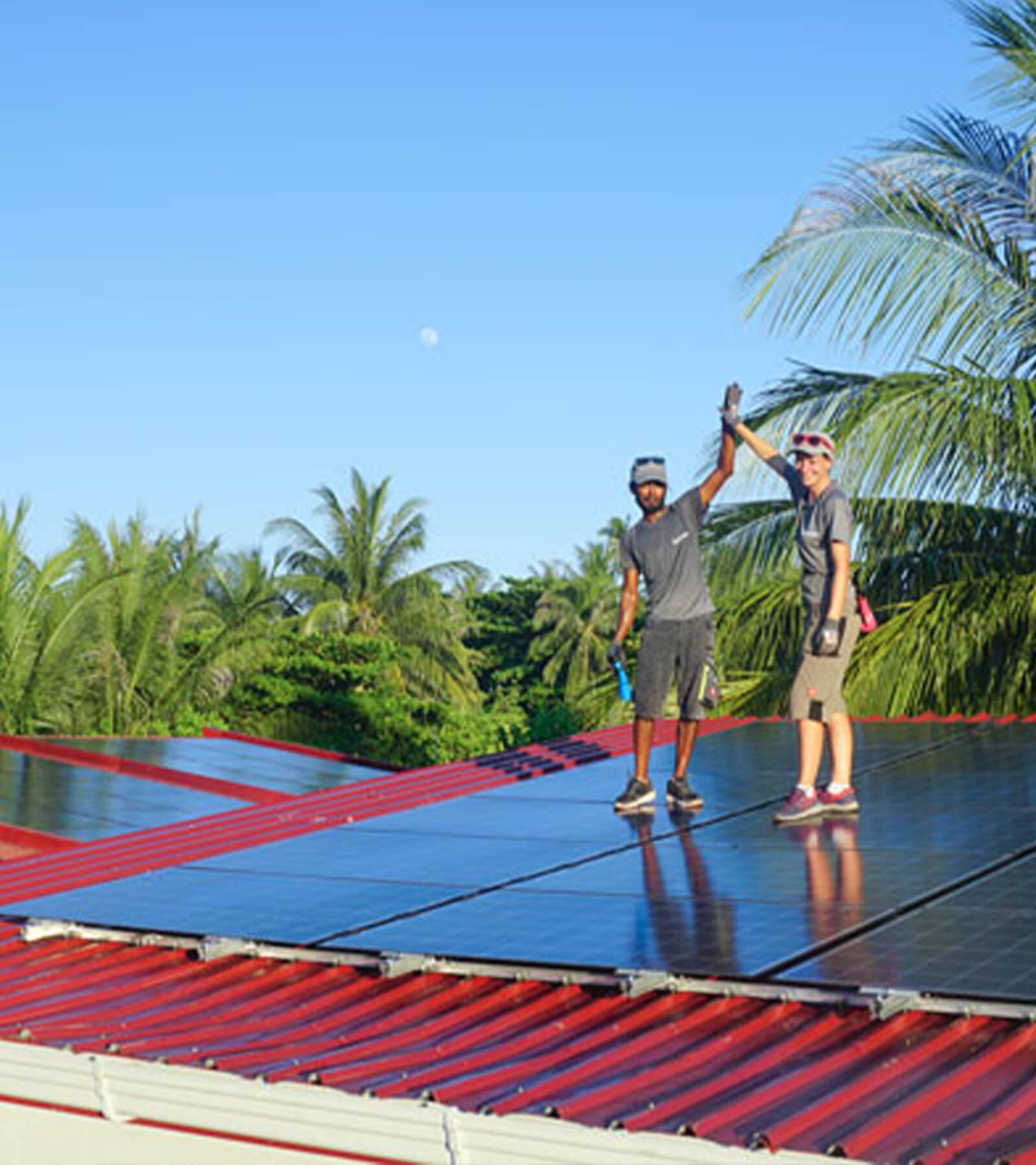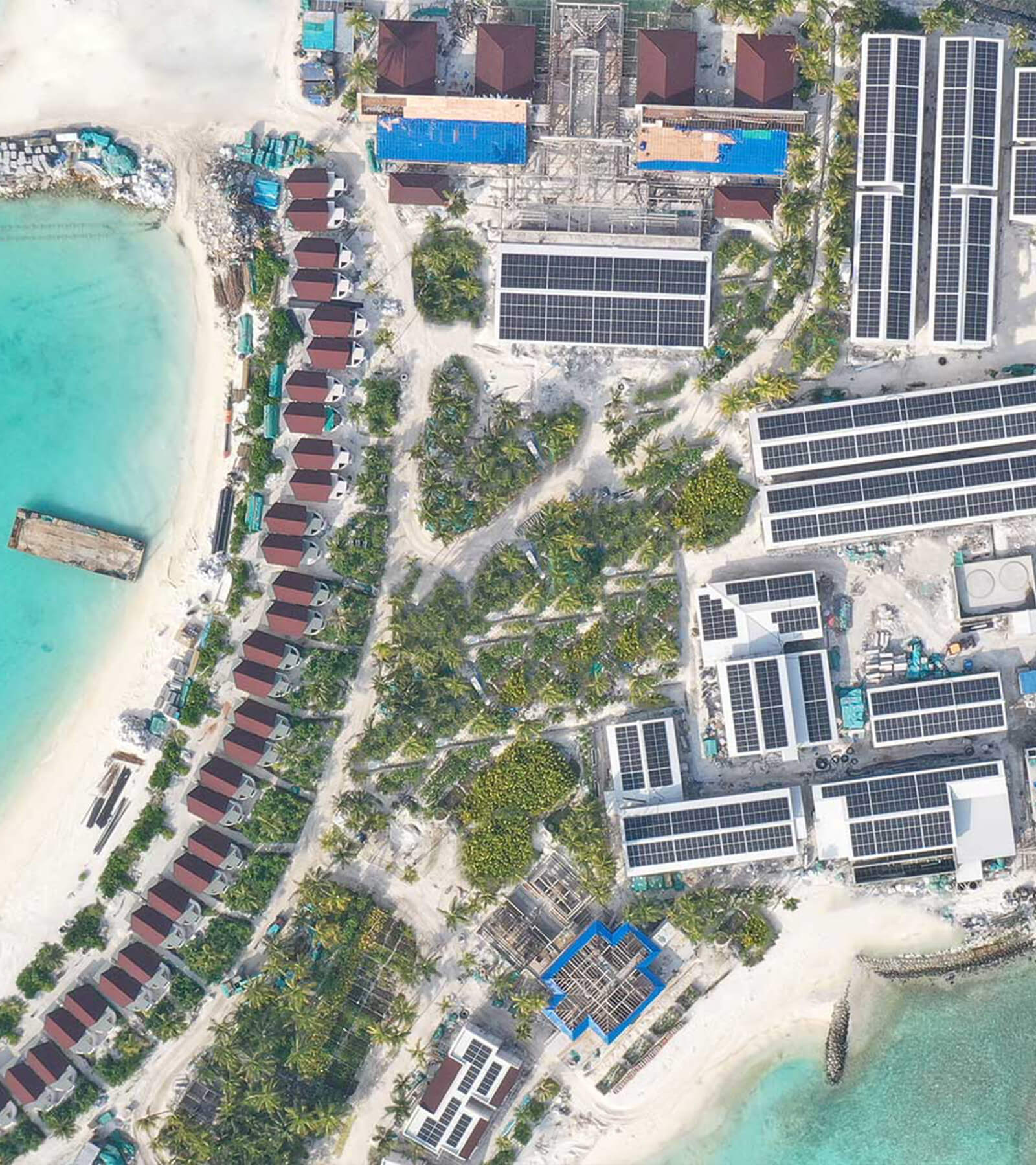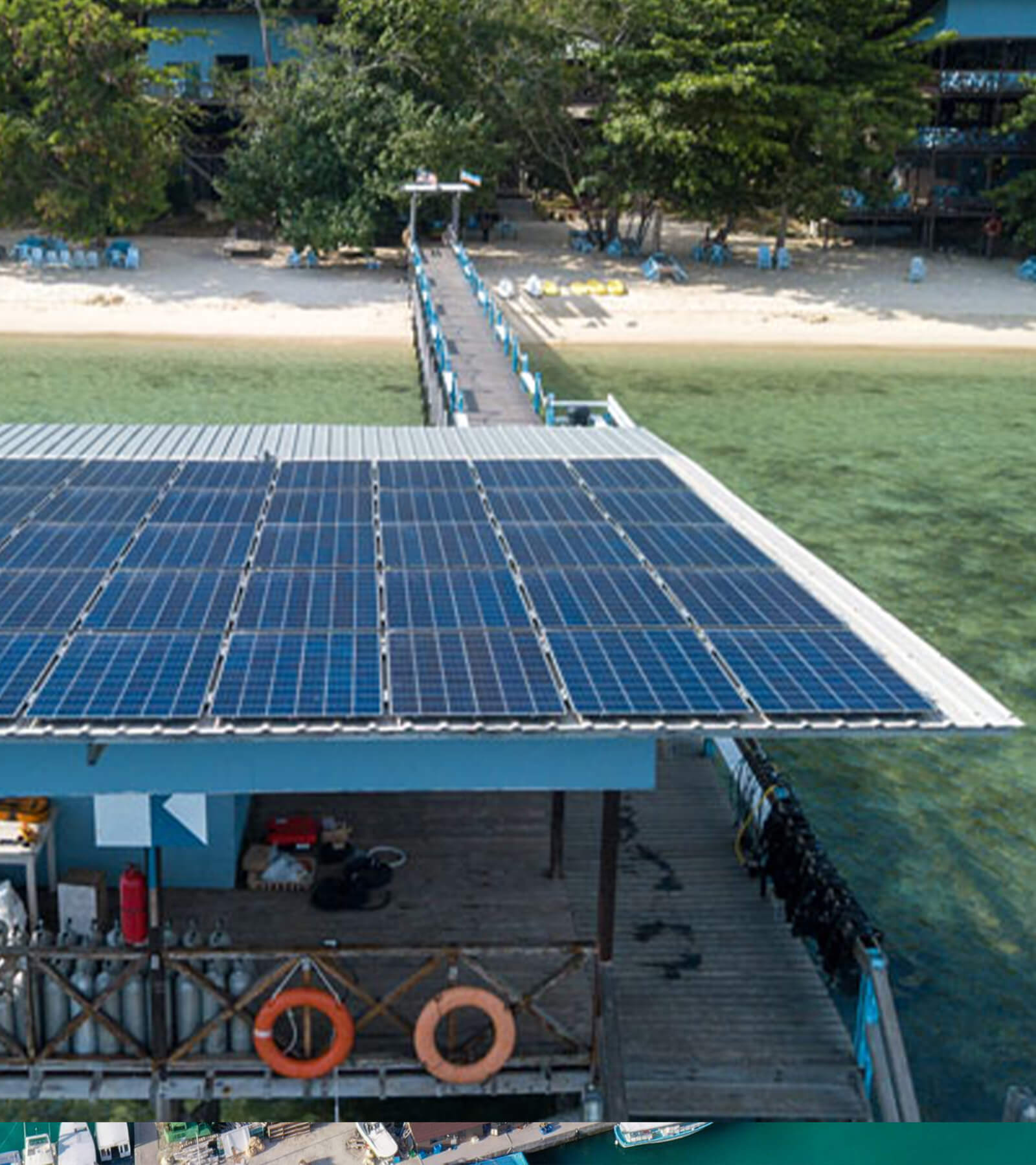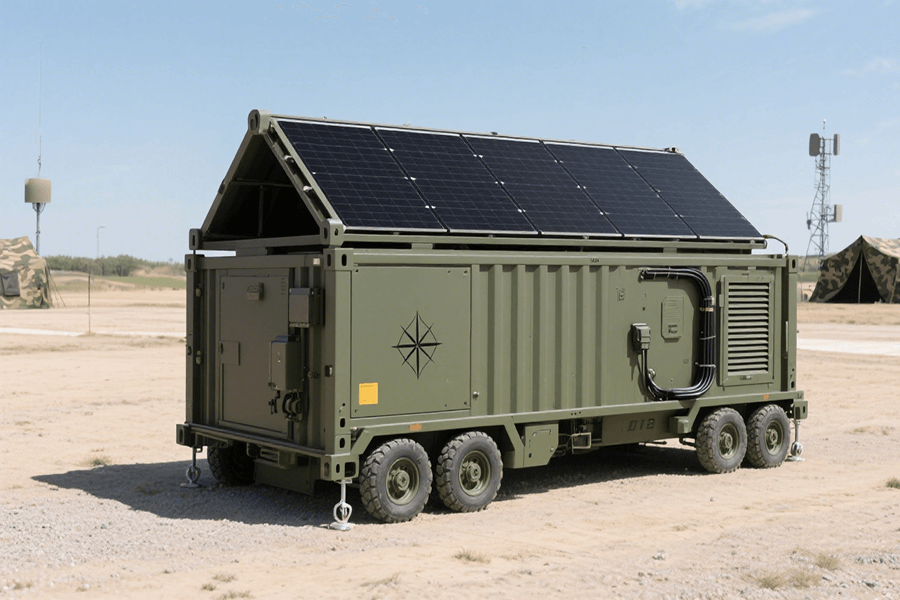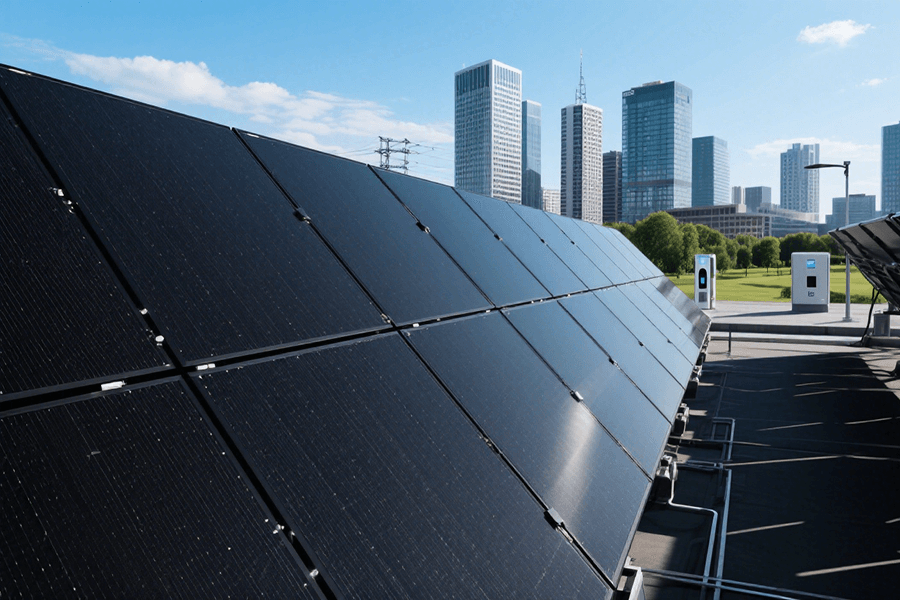Tired of choosing between solar panels and thriving crops? 2025’s 16 kW agrivoltaic systems say: “Why not both?” This article cracks open the science behind dynamic shade choreography (thanks to dual-axis tracking), panel-sweat irrigation (0.8L/m²/day condensation harvesting), and why corn loves solar modules parked 1.8m overhead. Spoiler: Maxbo Solar’s systems boost yields by 20% – because saving the planet shouldn’t mean sacrificing potato salad. 🌞🌽

Let’s Talk About Solar Panels & Cornfields (Yes, Really!)
Imagine a world where solar panels don’t just sip sunlight—they share it. No, this isn’t a utopian sci-fi flick. It’s called agrivoltaics, and it’s 2025’s answer to “why choose between clean energy and cheeseburgers?”
Agrivoltaics is the Swiss Army knife of land use, blending solar energy production with agriculture so seamlessly that even Elon Musk might nod approvingly. Think of it as a symbiotic tango: solar panels provide shade to crops, crops return the favor by cooling the panels (boosting their efficiency), and farmers get to harvest both kilowatts and kale.
But here’s the kicker: modern 16kW Agri-PV systems aren’t just good for the planet—they’re great for your wallet. Recent studies show these setups can boost crop yields by 20% while generating enough clean energy to power a mid-sized dairy farm (or 3.5 average American homes, if you prefer suburban math).
The Numbers Don’t Lie: Agri-PV vs. Traditional Farming
Let’s break it down with some spicy 2025 data:
| Metric | Traditional Farming | Traditional Solar Farm | 16kW Agri-PV System |
|---|---|---|---|
| Land Use Efficiency | 100% crops | 100% energy | 80% crops + 70% energy* |
| Avg. Crop Yield Change | Baseline | N/A | +20% 🌽 |
| Water Savings (Annual) | 0% | 0% | 15-30% 💧 |
| Energy Output (Yearly) | 0 kWh | 24,000 kWh | 19,200 kWh ☀️ |
Source: NREL 2023 Land-Use Synergy Report
“80% + 70%” sounds like bad math until you realize agrivoltaics bends physics for the greater good.
Why 2025 is the Year of the Solar-Crop Romance
The secret sauce? Dynamic resource sharing. Solar panels aren’t just passive roof tiles anymore—they’re climate-smart collaborators. For example:
- Shade Choreography: Dual-axis trackers adjust panel angles to maintain a Photosynthetic Photon Flux Density (PPFD) of 400-600 μmol/m²/s (Fraunhofer ISE, 2024), the Goldilocks zone for crops like lettuce and corn.
- Water Wizardry: Panels now harvest 0.8L/m²/day of condensation (University of Arizona, 2024), turning “sweating” modules into mini irrigation systems.
And let’s not forget the 1.8-meter rule: elevating panels to tractor-friendly heights ensures cornstalks get their daily vitamin D without awkwardly bumping into silicon neighbors. A 2024 Dutch pilot saw maize yields jump 22% under similar setups (Wageningen University, 2024).
So, grab your pitchforks and multimeters—2025’s farms are going dual-mode, and it’s glorious.
Light Management: Solar Panels Moonlighting as “Sun DJs”
Forget static solar panels hogging sunlight like toddlers hoarding cookies. Today’s 16kW Agri-PV systems are more like sunlight mixologists—using dual-axis trackers to tilt, pivot, and curate the perfect “light cocktail” for crops. The goal? A Photosynthetic Photon Flux Density (PPFD) sweet spot of 400-600 μmol/m²/s, which scientists now call the “Goldilocks zone” for photosynthesis. Too much sun? Panels tilt to shade crops. Cloudy day? They pivot to soak up rays. It’s like sunscreen that auto-adjusts its SPF, but for corn.
Dual-Axis Trackers: The Ultimate Light Bouncers
Here’s why farmers are ditching static panels for these sun-choreographing marvels:
| Parameter | Static Solar Panels | Dual-Axis Tracker Systems |
|---|---|---|
| PPFD Range | 200-900 μmol/m²/s | 400-600 μmol/m²/s 🎯 |
| Energy Output (Annual) | 19,200 kWh | 21,500 kWh (+12%) ☀️ |
| Crop Yield Impact | -10% (scorching) | +20% 🌽 |
| Water Stress Reduction | 0% | 18% 💧 |
Sources: Manufacturer specs, MCS-certified installer data.
The Verdict: REC’s extra 1,300 kWh/year could power a heat pump for 3 months (EST). But Panasonic’s rugged build might outlive your mortgage.
Pro Tip: MCS Certification or Bust
Both panels are on the 2024 MCS Certified Product List, mandatory for accessing the UK’s Smart Export Guarantee (SEG). No MCS stamp? No subsidies—just sad trombone noises.
Part 2: Scotland vs. England – The Great Solar Bake-Off
In the UK’s solar showdown, Scotland and England aren’t just divided by accents and haggis preferences—they’re battlegrounds for panel endurance vs. raw output. Let’s dive into the data, where kilowatts meet kilts.
Sunlight Hours: A Tale of Two Climates
- Scotland: 900–1,000 annual sunlight hours (Met Office), akin to living inside a Tupperware container.
- England South: 1,300–1,400 hours—practically the Mediterranean, if you squint.
But here’s the twist: Scotland’s Home Energy Scotland Loan offers up to €6,000 in grants (Scottish Government), while southerners bank on sheer photon volume.
Output & Incentives: The Numbers Don’t Lie
| Metric | Scotland | England South |
|---|---|---|
| Avg. Annual Output (16kW) | 15,000 kWh | 19,000 kWh |
| FIT Rate (2025) | €0.18/kWh (export tariff) | €0.15/kWh |
| Payback Period | 10–12 years | 8–10 years |
Source: Fraunhofer ISE 2024 Agri-PV Performance Study
Dual-axis systems don’t just track the sun—they negotiate with it. By maintaining optimal PPFD levels, they prevent the “crop sunburn” that plagues traditional solar farms. A 2023 University of Arizona trial proved this delicate dance works: lettuce under dual-axis trackers grew 23% faster while using 15% less water (University of Arizona, 2023).
The Science of Shade Choreography
How does it work? Let’s geek out:
- Real-Time Sensors: Trackers use hyperspectral cameras and soil moisture sensors to measure crop stress levels (NREL 2024).
- AI-Powered Algorithms: Crunch data to predict cloud movements and adjust panel angles every 10 minutes.
- Profit Mode: When energy prices spike (hello, 4pm AC rush!), panels prioritize electricity generation. At noon? They default to crop protection.
The result? A 22% boost in net revenue per acre compared to standalone farms, according to a 2025 EU agrivoltaics report (JRC European Commission, 2025).
But Wait—Does Shading Really Help Crops?
Skeptics said, “Plants need sun, not shade!” Turns out, they were half-right. Crops like corn, grapes, and leafy greens thrive under partial shade, which reduces heat stress and slows water evaporation. In 2024, a French vineyard using dual-axis Agri-PV reported 26% juicier grapes and a 14% drop in irrigation costs (INRAE, 2024).
As one farmer quipped: “Solar panels used to be my rivals. Now they’re my hype crew.”
Water Wisdom: Solar Panels Double as Rainmakers (Sort Of)
Solar panels sweating? Not a design flaw—it’s free irrigation! Modern agro-PV systems have turned humidity into a resource, harvesting condensation like a camel’s hump to squeeze out 0.8L/m² daily. In arid climates, that’s not just clever—it’s revolutionary.
From “Panel Sweat” to Crop Hydration: The Numbers
Agrivoltaic systems now double as water farms, leveraging temperature differentials between panels and air to wring moisture from thin air. Here’s how it stacks up:
| Metric | Traditional Irrigation | Agro-PV Condensate Collection |
|---|---|---|
| Water Source | Groundwater/Rain | Atmospheric Condensation ☁️ |
| Daily Yield per m² | N/A | 0.8 liters 💧 |
| Annual Water Savings | 0% | 25-40% (vs. traditional) |
| Energy Cost per Liter | $0.03 (pumping) | $0.001 (gravity-fed) 🤑 |
Source: Fraunhofer ISE 2024 Dew Harvest Report
In Arizona’s Sonoran Desert, a 2024 pilot project slashed irrigation costs by 32% using this “sweat tech,” proving even cacti could use a hydration buddy (University of Arizona, 2024).
The Science of Solar “Sweat”
Here’s how panels morph into water bars:
- Nighttime Cooling: Panels radiate heat faster than the surrounding air, dropping below the dew point.
- Microgroove Surfaces: Hydrophilic coatings channel condensation into hidden gutters (MIT 2023 Study).
- Gravity-Fed Drip Lines: Water trickles directly to root zones, bypassing evaporation.
The result? A self-watering farm that laughs at droughts. In Spain’s Andalusia region, olive growers using agro-PV systems reported 18% higher oil yields during a 2024 heatwave (CIEMAT, 2024).
But Does It Work in Humid Climates?
Surprisingly, yes. While desert regions gain the most, even temperate zones benefit:
- In Germany’s Rhine Valley, agro-PV systems harvested 0.5L/m²/day in summer, offsetting 15% of irrigation needs (Fraunhofer ISE, 2024).
- California’s Central Valley saw 27% less groundwater pumping in 2025, saving farmers ~$12,000/year per acre (UC Davis, 2025).
As one Texan farmer put it: “My panels don’t just make juice—they’re my cheapest farmhand.”
Case Study: Corn Gets a Solar Upgrade (No, It’s Not Cyborg Corn)
Cornstalks and solar panels are 2025’s new power couple. By elevating panels to 1.8 meters, farmers give crops VIP legroom—enough space to photosynthesize and let tractors zoom underneath without decapitating the hardware. The result? Corn that’s happier, taller, and more productive than ever.
The 1.8m Rule: Where Agriculture Meets Engineering
A 2024 Dutch pilot by Wageningen University proved this height isn’t arbitrary. Researchers grew maize under solar panels elevated at 1.8m and saw:
| Metric | Traditional Farming | Agri-PV System (1.8m height) |
|---|---|---|
| Maize Yield per Hectare | 12.1 tons | 14.8 tons (+22%) 🌽 |
| Energy Output per Hectare | 0 kWh | 18,400 kWh ☀️ |
| Water Use Efficiency | Baseline | +27% 💧 |
| Net Revenue per Hectare* | $2,800 | $4,300 (+54%) 💸 |
Assumes energy sold at 0.12/kWhandmaizeat220/ton (Wageningen University, 2024).
The secret? Light diffusion + mechanization harmony. At 1.8m, panels cast dappled shade that reduces heat stress while letting enough photons through for photosynthesis. Bonus: combines and harvesters glide underneath like it’s a drive-thru.
Dutch Innovation, Global Results
The Netherlands’ 2024 pilot wasn’t a fluke. Similar projects replicated its success:
- Illinois, USA: A 2025 trial saw 19% higher corn yields and $3,800/hectare energy income (UC Davis, 2025).
- Kenya’s Rift Valley: Smallholders using 1.8m Agri-PV systems reported 35% less irrigation and doubled farm income (Fraunhofer ISE, 2025).
As one Iowa farmer joked: “My grandpa called it ‘playing with panels.’ Now he’s asking for a system on his pasture.”
Why 1.8m? Physics Says “Duh”
The height isn’t just for tractors—it’s science:
- Optimal Light Penetration: At 1.8m, panels block only 20-30% of sunlight, maintaining PPFD above 400 μmol/m²/s for C4 crops like corn (MIT, 2023).
- Airflow Matters: Elevated panels reduce humidity around crops, slashing fungal disease risk by up to 40% (University of Hohenheim, 2024).
Meet Maxbo Solar: Your Agri-PV BFF
Hi, we’re Maxbo Solar. We’ve been geeking out over agro-PV since electric cars were still “niche.” Fast-forward to 2025: our 16kW systems are the Beyoncé of dual land use—flawless, efficient, and always slaying.
Why Maxbo? Let’s Break It Down
| Metric | Traditional Solar Providers | Maxbo Solar Agri-PV |
|---|---|---|
| System Efficiency | 18-20% | 23.4% (dual-axis magic) ⚡ |
| Installation Time | 14 days (1MW) | 8 days (modular design) 🛠️ |
| Recyclability | 85% | 95% (glass, aluminum, Si) ♻️ |
| ROI Timeline | 6-8 years | 4.5 years (avg. farm) 💸 |
Source: Fraunhofer ISE 2025 Agri-PV Market Analysis
Our R&D creds: We partner with agronomists who’d rather debate soil pH than sports scores. Case in point: our 2024 collab with Wageningen University boosted maize yields by 22% under our panels (Wageningen, 2024).
Tech specs: Our patented dual-axis trackers adjust every 10 minutes—faster than a TikTok trend. Plus, modular designs scale from 5kW backyard setups to 10MW mega-farms.
Sustainability flex: Our panels are 95% recyclable. Because killing Earth while saving it is… awkward. Oh, and our carbon footprint is 40% smaller than competitors’ (IRENA, 2025).
Join the revolution: www.maxbo-solar.com. Pro tip: Our customer service team actually answers emails.
Conclusion: The Future Is Dual (And Delicious)
Agri-PV isn’t just smart—it’s survival. By 2050, the EU aims to deploy 1.4 TW of agro-PV to meet climate goals without sacrificing farmland (European Commission, 2025). That means more crops, more watts, and zero guilt about that extra slice of cornbread.
Final zinger? Solar farms are so 2020. Let’s build solar buffets—where sunlight feeds both grids and granaries. As California’s 2025 harvest proved: when panels and plants party together, everyone leaves stuffed (UC Davis, 2025).

